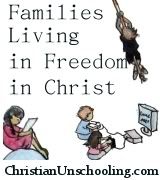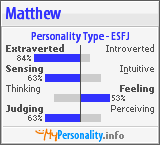Yes, I said the P word.
When I think of politics, I remember nasty fights my father's family would get into every Thanksgiving and Christmas over the political weather. They were each very vocal in their beliefs and they had opposite beliefs. Not a good mix for this timid young girl. I hated listening to them argue and yell and vowed to stay away from politics.
In fact, I remember that my first big fight with my husband (while we were still dating) was over politics. Not who I voted for but the fact that I wouldn't discuss it with him. I didn't even want to tell him *why* I voted for who I voted for because I knew he voted for the other guy and I was expecting a big fight like I'd seen as a young girl.
So I've stayed out of it. I'll be honest...my views have drastically changed since we got married (all of my own accord, I assure you) and since we now agreed, it seemed a little safer to discuss. But still, I didn't want to get him going. What could my one little vote do? Vote and live with whatever the majority wanted.
Until now. This last year has opened the eyes of many Moms all across America, including me. I think we've decided that the spending of the last 5 years is totally out of control and this is going to have a major effect on our kids lives. And as a mom, you don't mess with our kids!! I feel the urge, as many moms have recently, to actually get involved and do something about it.
I now find myself watching political talk shows and listening to political talk radio. I find myself wanting to head to DC in an effort to make my points heard. And I find myself wanting to really show my kids what this country was founded on and the original beliefs of our government. I believe it's important to teach them so they can know the truth.
So I've decided to get a little Charlotte Mason-y on you. We're going to read through history. Good living books like The Sign of the Beaver and Little House and The Call of the Wild and Little Women. Books that enable us to dip right into that time in history and learn about life.
We're starting with The Birchbark House, a story about a Native American Ojibwa girl in 1847. We've read two chapters and have already discussed smallpox, Native American religious beliefs, building materials for homes, language differences, and the uses and preparation of animals (food, clothing, tools, etc). They often interrupt the story to discuss a new idea to think about, which is a little distracting to me but I've learned this is how they like to read and I can go with the flow. :) We're thinking of building a tepee (because we can't rip birch bark off a tree anywhere near here).
I'll keep you updated on our reading list and might add the list in the sidebar too.
Wednesday, October 07, 2009
Monday, October 05, 2009
Zoology
The kids have enjoyed studying animals all summer around here. They've focused on insects but we've also studied squirrels, dogs, rabbits and turkeys. Yes, turkeys. Though we live in a suburb of a very large city, we have a gang of wild turkeys who have chosen a home nearby. We pass by them nearly every day at some point. I'll try to snap some pictures for you but I'm usually driving so we'll see what I can get safely. ;) Maybe we need to take a walk up there and hunt for them.
But they want more info now. Like, what actually makes birds fly? And are squirrels and woodchucks related?
So I found a series of books that we are really enjoying. It's a series by Jeannie Fulbright and called Flying Creatures of the Fifth Day. It is written for grades K-6 (but I'm learning things and not feeling 'talked down' to!). We go over the subject matter, I find out what they absorbed and we move on. I can see these books as great reference materials and books that we do several times in the years to come, learning more each time around as our interests grow. Jeannie has two more books in the zoology series on land animals and swimming creatures. She also has books on biology, chemistry, botany, astronomy, etc. It's a great series and we're having fun with it.
So what does enable birds to fly? Is it the amount of force they exert on the air? No, it's lift. The neat experiment we did was this:
1. fill a cup with water and put a straw in it
2. take another straw and blow across the top of the first straw (in the fashion of blowing across the top of a glass soda bottle to make a sound)
What happens? Try it and see. :)
But they want more info now. Like, what actually makes birds fly? And are squirrels and woodchucks related?
So I found a series of books that we are really enjoying. It's a series by Jeannie Fulbright and called Flying Creatures of the Fifth Day. It is written for grades K-6 (but I'm learning things and not feeling 'talked down' to!). We go over the subject matter, I find out what they absorbed and we move on. I can see these books as great reference materials and books that we do several times in the years to come, learning more each time around as our interests grow. Jeannie has two more books in the zoology series on land animals and swimming creatures. She also has books on biology, chemistry, botany, astronomy, etc. It's a great series and we're having fun with it.
So what does enable birds to fly? Is it the amount of force they exert on the air? No, it's lift. The neat experiment we did was this:
1. fill a cup with water and put a straw in it
2. take another straw and blow across the top of the first straw (in the fashion of blowing across the top of a glass soda bottle to make a sound)
What happens? Try it and see. :)
Subscribe to:
Comments (Atom)




